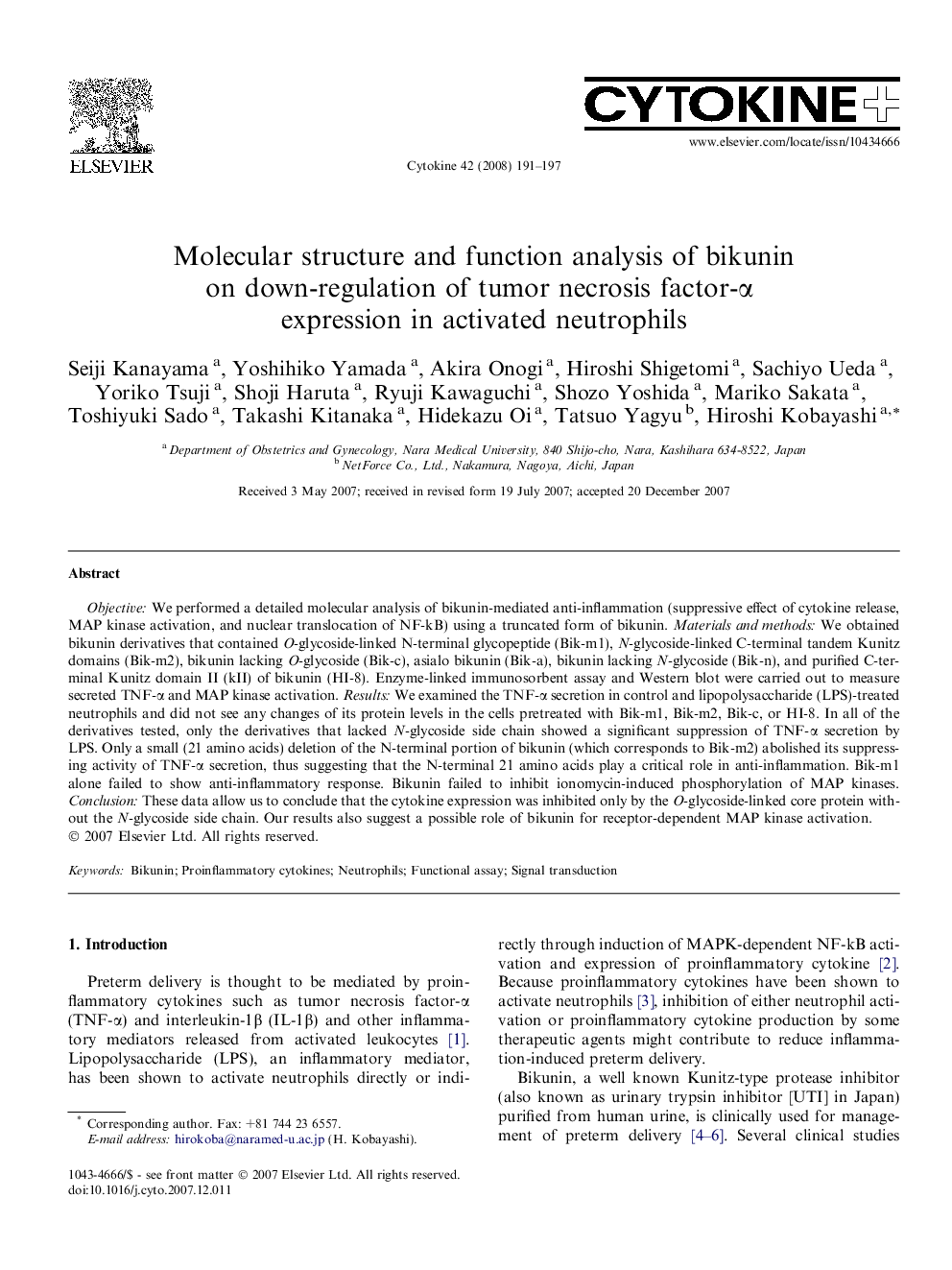| Article ID | Journal | Published Year | Pages | File Type |
|---|---|---|---|---|
| 2795544 | Cytokine | 2008 | 7 Pages |
Objective: We performed a detailed molecular analysis of bikunin-mediated anti-inflammation (suppressive effect of cytokine release, MAP kinase activation, and nuclear translocation of NF-kB) using a truncated form of bikunin. Materials and methods: We obtained bikunin derivatives that contained O-glycoside-linked N-terminal glycopeptide (Bik-m1), N-glycoside-linked C-terminal tandem Kunitz domains (Bik-m2), bikunin lacking O-glycoside (Bik-c), asialo bikunin (Bik-a), bikunin lacking N-glycoside (Bik-n), and purified C-terminal Kunitz domain II (kII) of bikunin (HI-8). Enzyme-linked immunosorbent assay and Western blot were carried out to measure secreted TNF-α and MAP kinase activation. Results: We examined the TNF-α secretion in control and lipopolysaccharide (LPS)-treated neutrophils and did not see any changes of its protein levels in the cells pretreated with Bik-m1, Bik-m2, Bik-c, or HI-8. In all of the derivatives tested, only the derivatives that lacked N-glycoside side chain showed a significant suppression of TNF-α secretion by LPS. Only a small (21 amino acids) deletion of the N-terminal portion of bikunin (which corresponds to Bik-m2) abolished its suppressing activity of TNF-α secretion, thus suggesting that the N-terminal 21 amino acids play a critical role in anti-inflammation. Bik-m1 alone failed to show anti-inflammatory response. Bikunin failed to inhibit ionomycin-induced phosphorylation of MAP kinases. Conclusion: These data allow us to conclude that the cytokine expression was inhibited only by the O-glycoside-linked core protein without the N-glycoside side chain. Our results also suggest a possible role of bikunin for receptor-dependent MAP kinase activation.
